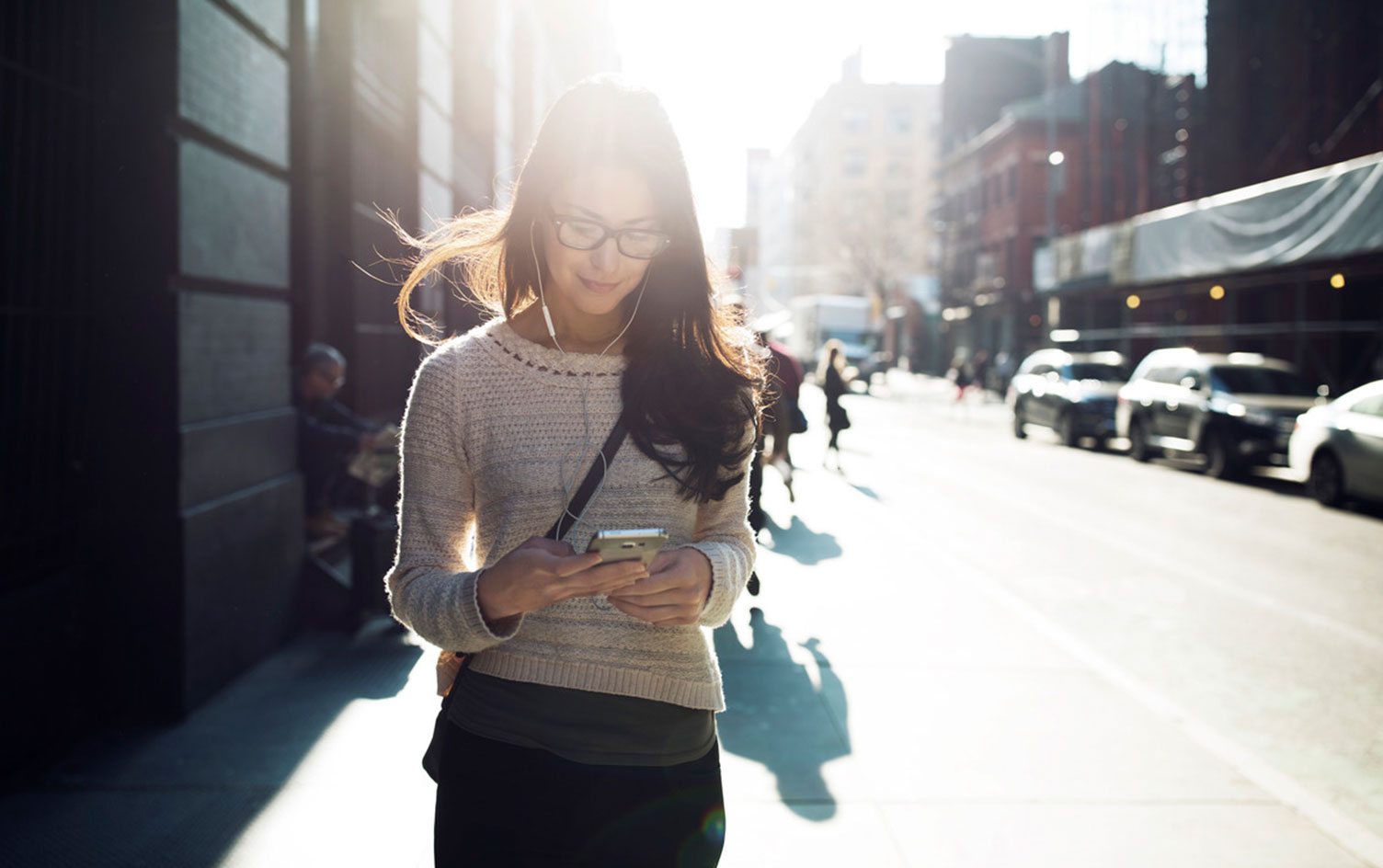It might be tempting to bang out a quick text or grab a bite on the go, but walking and multitasking could lead to injuries. Just as several states outlawed sending emojis from behind the wheel (thanks to research showing texting and driving impairs judgment and reaction times), new research on texting while walking shows that you shouldn’t be doing that, either.
A 2017 study published in in PLOS One found that texting while walking leads to taking shorter steps and increases the height of your stride — producing a stride pattern similar to those seen while under the influence of alcohol. Moreover, walkers were slower and more apt to veer off course.
Conrad Earnest, PhD, a research associate in the Exercise and Sport Nutrition Lab at Texas A&M University, who conducted a similar study also published in PLOS One, explains, “Several reports suggest that this type of pedestrian behavior leads to more pedestrian accidents, possibly increases the risk of tripping and increases riskier road crossing behavior due to a lack of attention.”
In Honolulu, texting and walking could also lead to a fine. Starting October 25, it will be illegal to cross a street or highway while looking at a mobile electronic device like a cellphone. Fines will range from $15–$35 for the first offense and go up to $99 for a third offense.
WALKING AND TALKING OR CHEWING GUM

It’s not just texting that’s problematic: Walking and talking on the phone also has risks.
Ohio State University research showed the number of emergency room visits associated with pedestrians using cellphones in public more than doubled between 2005–2010. In a news release, co-author and professor emeritus Jack Nasar, PhD, says, “The role of cellphones in distracted driving injuries and deaths gets a lot of attention and rightly so, but we need to also consider the danger cellphone use poses to pedestrians.”
At Old Dominion University, researchers studied the impact of chewing gum on walking. The research, which has not been published, found you walk more quickly when you chew. Although the study wasn’t set up to look at multitasking, Steven Morrison, PhD, the professor who oversaw the research, noted that performing any two rhythmic behaviors like chewing, tapping your fingers and walking, affects gait.
Because you tend to chew faster than you walk, Morrison says, “when you begin to chew, you take off,” so your gait matches the pace of chewing.
READ MORE > 4 MAJOR WALKING MISTAKES AND HOW TO AVOID THEM
AGE AND GENDER DIFFERENCES
The impact of multitasking tends to affect men more acutely than women. A 2017 study published in the journal Royal Society Open Science found men were stumped by a cognitive test administered as they were walking.
Earnest believes teens may be another population most at risk to the effects of multitasking while walking because of their tendency to engage in riskier behavior but adds, “The same risks apply to those in the workplace and bustle around town during their daily commute.”
Since multitasking and cellphones are facts of life, researchers acknowledge that convincing pedestrians to go cellphone free is not a likely solution. Earnest compares checking email and texting while walking to eating a healthy diet and exercising, explaining, “It’s like any healthy lifestyle habit. Eventually one has to exercise due diligence and self-protection.”
Just like doughnuts are OK in moderation, Earnest noes, “Perhaps a good middle ground is that if a text or email really can’t wait, then ‘pull to the side,’ stand still, answer the text/email and continue along.”




